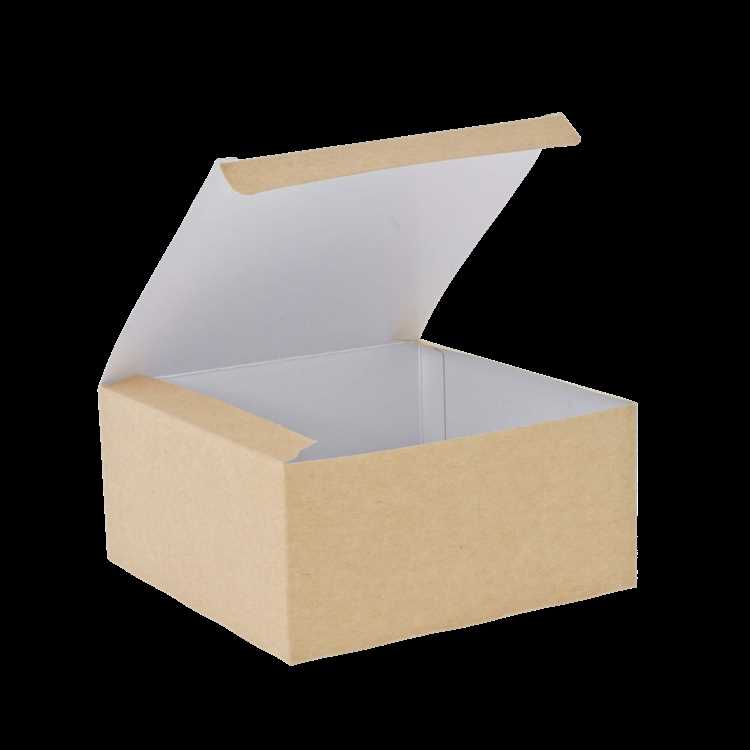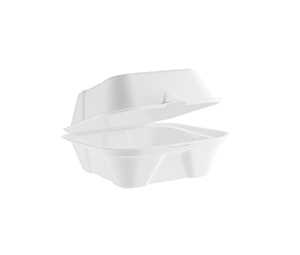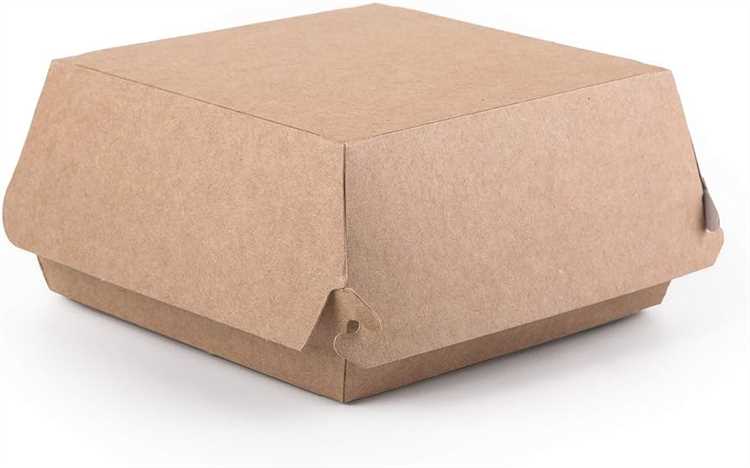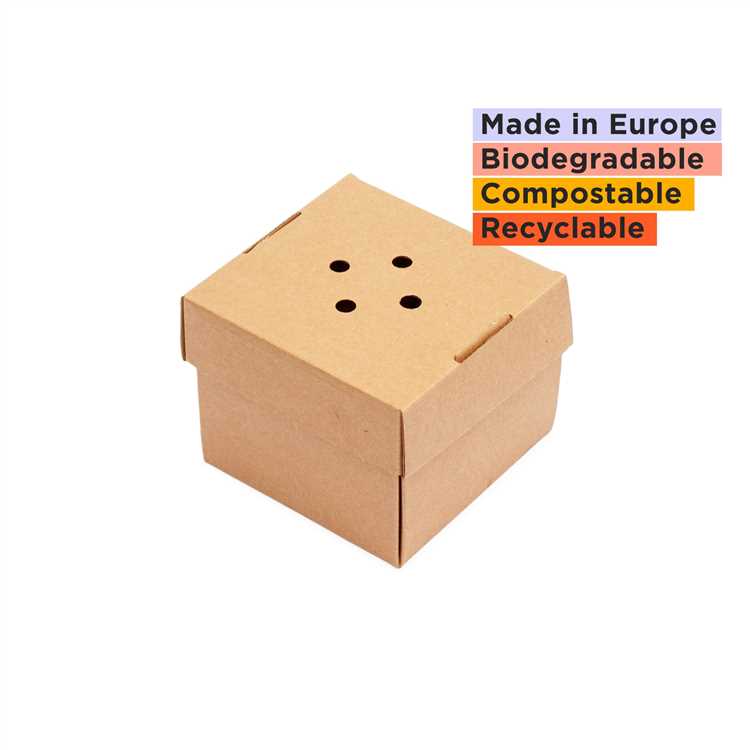
Fast food chains have long been criticized for their contribution to plastic waste and environmental pollution. One major culprit is the ubiquitous burger box – a staple of fast food culture. But can these burger boxes be recycled? While the answer may not be as straightforward as one might hope, there are important considerations to be made.
Burger boxes are typically made from paperboard, a type of paper product that is thicker and more durable than regular paper. This makes them ideal for holding greasy foods like burgers and fries, as they are less likely to become soggy or fall apart. However, the presence of oils and food residues on these boxes can make them difficult to recycle in traditional paper recycling systems.
That being said, there are now alternative methods and technologies being developed to recycle burger boxes. Some recycling facilities have implemented specialized processes to remove contaminants from paperboard, allowing for the recycling of these boxes. Additionally, advancements in recycling technology are making it possible to extract and reuse the valuable fibers from food-contaminated paper products.
While not all recycling facilities have the capability to handle burger boxes, it is important for consumers and businesses to be aware of the recycling options available in their area. By choosing to recycle burger boxes whenever possible and advocating for improved recycling infrastructure, we can all play a part in reducing the environmental impact of fast food packaging.
- The Importance of Recycling
- Understanding Burger Boxes
- Paper Burger Boxes
- Cardboard Burger Boxes
- Components of Burger Boxes
- Challenges of Recycling Burger Boxes
- 1. Contamination
- 2. Mixed Materials
- 3. Limited Recycling Programs
- Innovations in Burger Box Recycling
- Q&A:
- Can burger boxes be recycled?
- What happens if a burger box is not recycled?
- Why are some burger boxes not recyclable?
- How can I tell if a burger box is recyclable?
- What can I do with a burger box if it is not recyclable?
- Can burger boxes be recycled?
The Importance of Recycling
Recycling plays a crucial role in preserving our environment and reducing waste. It is essential for us to understand the importance of recycling and how it positively impacts our planet.
First and foremost, recycling helps conserve natural resources. By reusing materials such as paper, plastic, and metal, we can reduce the need for extracting, refining, and processing raw materials from the earth. This can help preserve forests, reduce energy consumption, and lessen the destruction of wildlife habitats.
Additionally, recycling helps reduce greenhouse gas emissions. When we recycle materials instead of sending them to landfills, we reduce the amount of methane, a potent greenhouse gas, that is released into the atmosphere. This, in turn, helps mitigate the effects of climate change and global warming.
Furthermore, recycling helps save energy. Producing goods from recycled materials requires much less energy compared to manufacturing products from scratch. For example, recycling aluminum cans saves approximately 95% of the energy needed to produce new cans. This energy-saving aspect of recycling not only reduces carbon emissions but also helps conserve finite energy resources.
Moreover, recycling helps create jobs and stimulate economic growth. The recycling industry employs millions of people worldwide, from the collection and sorting of recyclables to the manufacturing of new products. By supporting recycling initiatives, we can contribute to local economies and promote sustainable development.
Lastly, recycling fosters a culture of sustainability and responsible consumption. By actively participating in recycling programs, we become more aware of our consumption patterns and the impact it has on the environment. This awareness can lead to more informed choices and habits, ultimately leading to a greener and more sustainable society.
In conclusion, recycling is not just a simple act but a crucial step towards a more sustainable future. By recycling, we can conserve natural resources, reduce greenhouse gas emissions, save energy, create jobs, and foster a culture of sustainability. It’s up to us to take responsibility for our actions and make recycling a priority in our daily lives.
Understanding Burger Boxes
Burger boxes are a common type of packaging used in the fast-food industry to contain and transport burgers. These boxes are made from different materials, and understanding their composition is essential to determine whether they can be recycled.
Most burger boxes are made from paper or cardboard. These materials are lightweight, cost-effective, and provide insulation to keep the burger warm while maintaining its freshness. However, not all paper and cardboard used for burger boxes are created equal.
Paper Burger Boxes
Paper burger boxes are usually made from virgin fibers or recycled content. Virgin paper simply means that the fibers used to make the paper come from freshly cut trees. On the other hand, recycled paper is made from post-consumer waste or pre-consumer waste, such as recycled newspapers or office paper. Both types of paper can be recycled, but the recycling process for each may differ.
Cardboard Burger Boxes
Cardboard burger boxes are made from thicker paperboard material. This type of material is sturdy and provides more protection for the burger. Cardboard can be recycled, but the recycling process may require removing any plastic or wax coating on the surface of the box. This coating is often applied to make the box grease-resistant.
It’s important to note that not all burger boxes can be recycled. Many fast-food establishments use burger boxes that have additional materials, such as plastic windows or foam inserts. These added features make the boxes non-recyclable in most recycling facilities. Therefore, it’s crucial to check the recycling guidelines in your local area to determine if burger boxes can be recycled.
Additionally, even if the burger box is recyclable, it’s important to properly clean it before disposing of it in the recycling bin. Food residue can contaminate the recycling process and render the box non-recyclable.
In conclusion, understanding the composition of burger boxes is crucial in determining their recyclability. While paper and cardboard burger boxes can often be recycled, it’s essential to check for any additional materials or coatings that may render them non-recyclable. Properly cleaning the boxes before recycling is also important to ensure the recycling process is not contaminated.
Components of Burger Boxes

Burger boxes are typically made of a few different components, each serving a specific purpose. Understanding these components is important for determining the recyclability of burger boxes.
1. Cardboard: The main component of burger boxes is typically cardboard. Cardboard is a durable and versatile material that provides structural integrity to the box. It is made from wood pulp and can be recycled multiple times.
2. Coating: Burger boxes often have a coating or lining on the inside to prevent grease and liquids from leaking through. This coating is usually made of plastic, such as polyethylene or polypropylene. Unfortunately, this coating can make the box difficult to recycle, as it must be separated from the cardboard before recycling.
3. Printing and Labels: Burger boxes often feature printed designs and labels to showcase branding or provide helpful information. These graphics are typically applied using ink or adhesive stickers. While these components do not affect the recyclability of the box, they should be removed before recycling to ensure proper processing.
4. Handles and Inserts: Some burger boxes may have additional components such as handles or inserts. Handles are often made of plastic or cardboard and provide convenience for carrying the box. Inserts, on the other hand, are typically made of cardboard and are used to separate burger patties or other ingredients. These additional components may impact the recyclability of the box and should be removed if possible.
By understanding the different components of burger boxes, consumers and businesses can make more informed decisions about recycling and waste management. It is important to check with local recycling facilities to determine their specific guidelines for recycling burger boxes and ensure they are properly sorted and prepared for recycling.
Challenges of Recycling Burger Boxes

While recycling is a great way to reduce waste and conserve resources, the recycling of burger boxes presents several challenges. These challenges include:
1. Contamination
Burger boxes are often contaminated with food and grease, which can make them difficult to recycle. The presence of food waste and oils can contaminate other recyclables and compromise the quality of the recycled product. This contamination can also attract pests and insects to recycling facilities.
2. Mixed Materials
Burger boxes are typically made from a combination of materials, such as cardboard and plastic. This can make the recycling process more complex, as the different materials need to be separated before they can be recycled. The separation process requires additional time and resources, making it less cost-effective.
| Material | Recyclability |
|---|---|
| Cardboard | Yes |
| Plastic (usually coated with a thin layer) | Depends on local recycling facilities |
3. Limited Recycling Programs
Not all recycling programs accept burger boxes due to the challenges mentioned above. Many facilities do not have the capability to effectively process and recycle these boxes. As a result, burger boxes may end up in landfills instead of being recycled.
Despite these challenges, there are efforts being made to overcome them. Innovations in recycling technology and processes are being developed to improve the recyclability of burger boxes. Additionally, educating consumers about proper disposal and recycling methods can help reduce contamination and improve the overall recyclability of burger boxes.
Innovations in Burger Box Recycling

As the demand for sustainable packaging solutions continues to grow, innovators are constantly striving to improve the recycling process of burger boxes. These innovators are focusing on enhancing the recyclability of these boxes to reduce waste and promote a circular economy.
One of the key innovations in burger box recycling is the development of specialized technologies that can separate the different components of the box. Traditionally, burger boxes have been difficult to recycle because of their mixed-material composition. However, new technologies, such as pulping and paper fiber recovery systems, can effectively separate the cardboard from any plastic or grease residue.
Another innovation in burger box recycling is the use of bio-based materials in the manufacturing process. By replacing traditional petroleum-based plastics with bio-based alternatives, the environmental impact of these boxes can be significantly reduced. These bio-based materials are often derived from renewable resources, such as cornstarch or sugarcane, and are biodegradable or compostable.
In addition to technological advancements, increased awareness and education about burger box recycling have also played a crucial role in promoting sustainable practices. Many restaurants and fast-food chains are now actively promoting the recycling of their burger boxes and providing clear instructions on how to properly dispose of them.
Furthermore, collaborations between packaging manufacturers, waste management companies, and recycling facilities have been instrumental in improving burger box recycling. By working together, these stakeholders can develop efficient collection and recycling systems that ensure burger boxes are processed in a way that minimizes their environmental impact.
Overall, the innovations in burger box recycling are paving the way for a more sustainable future. Through advancements in technology, the use of bio-based materials, and increased awareness, the recycling process for burger boxes is becoming more efficient and effective. By embracing these innovations, consumers can take an active role in reducing waste and contributing to a circular economy.
Q&A:
Can burger boxes be recycled?
Yes, burger boxes can be recycled, but it depends on the material they are made of. Most burger boxes are made of paperboard, which is recyclable.
What happens if a burger box is not recycled?
If a burger box is not recycled and ends up in a landfill, it can take several years to decompose. It also contributes to the accumulation of waste in landfills.
Why are some burger boxes not recyclable?
Some burger boxes are not recyclable because they are made of materials that are difficult to recycle, such as polystyrene foam. These materials are not accepted in most recycling programs.
How can I tell if a burger box is recyclable?
You can usually tell if a burger box is recyclable by checking the recycling symbol on the packaging. If it has a number 1 or 2 inside the symbol, it means it is recyclable. If it has a number 6 or 7, it is not recyclable.
What can I do with a burger box if it is not recyclable?
If a burger box is not recyclable, you can try to reuse it for other purposes, such as storing leftovers or organizing items. If it is not reusable, it should be disposed of in the regular trash.
Can burger boxes be recycled?
Yes, burger boxes can be recycled. However, it depends on the type of material used to make the box. Some burger boxes are made of cardboard, which is widely accepted for recycling. However, if the box has a plastic or wax coating, it may not be recyclable in some recycling programs.